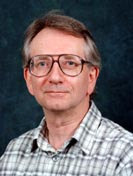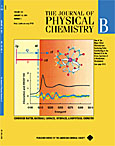

Honorary Research Fellow (formerly Reader) in Chemistry
Department of Chemistry, Joseph Black Building,
University of Glasgow, GLASGOW G12 8QQ
Telephone 0141 330 4375; Fax 0141 330 4888; Email
bob@chem.gla.ac.uk

My current research interests focus on the SPECTROSCOPY of (principally) chiral
molecules. Major interests are NATURAL
X-ray Circular Dichroism and the Circular Dichroism and Circularly Polarised Luminescence
of transition metal and Lanthanide compounds.
An introduction to the Circular Dichroism of Transition Metal and Lanthanide Compounds can be found in "Chiral Molecules Spectroscopy", R.D. Peacock and B. Stewart, in Comprehensive Co-ordination Chemistry II, vol. 2, Chapter 2.5, pp 65-81
Circular Dichroism in the X-ray region:
The new bright synchrotron source at ESRF
(Grenoble) has made it possible to measure Natural
Circular Dichroism (NCD) in the X-ray region for the first time.
In collaboration with Dr
B Stewart, Dr T Prosperi and co-workers (ICMAT-CNR, Rome)
and Dr J Goulon and co-workers (ESRF) we have made the first
measurements of CD in the X-ray region - at the Nd L3
edge on oriented single crystals of Na3Nd(diglycolate)3.2NaBF4.6H2O.
The XNCD spectra have several
interesting aspects including a well-resolved pre-edge feature and circularly
dichroic XANES.
Circularly polarised luminescence spectroscopy
(CPL):
Circularly Polarised Luminescence is the luminescence analogue of CD spectroscopy. As such it probes the chirality of molecules in the excited state. We have one of the few CPL spectrometer in the world and have a number of projects ongoing:
- In collaboration with Professor David Parker (Durham) we are investigating the CPL of a series of lanthanide complexes designed to detect small anions under physiological conditions.
J Amer. Chem. Soc, 112, 9574 - 9684 (2000).
J Amer. Chem. Soc,, 112, 9674 - 9684 (2000); 124, 12697 - 12705 (2002).
Org. and Biomolecular Chem., 3, 1013-1024 (2005)
Chem. Comm., 4261-4263 (2008)
- An investigation of the CPL of chiral polypyridyl complexes.
- The CPL of single crystals of lanthanide and actinide complexes.
Anion Receptors
In collaboration with
Dr A C Benniston (Newcastle) , my last graduate student, Partick Gunning, has just completed
the synthesis of a series of azamacrocyclic-cyclophane hybrid receptors.The modular nature of the synthetic route allows
the azamacrocycle, the cyclophane and the amide linker to be independently varied.
The crown ether is designed to act as a host toward biologically relevant guests, whereas the
macrocycle can coordinate a zinc(II) or a copper(II) ion. The pKa of this bound water in the zinc(II)
complex of L1 = 7.5. Isothermal calorimetry experiments carried out on [ZnL1(OH2)](CF3SO3)2 in buffered water (pH 7.4) at 25 øC show that the host strongly binds a series of phosphate derivatives.
A Modular Ditopic Crown-shielded Phosphate Ion-pair Receptor, P. Gunning, A.C. Benniston and R.D. Peacock, Chem. Commun.
, 2226-2227 (2004); Synthesis and Binding Properties of Hybrid Cyclophane-Azamacrocycle Receptors, P. Gunning, A.C. Benniston and R.D. Peacock,
J. Org. Chem., 70, 115-123 (2005)
Patrick is now an Associate Professor at the University of Toronto